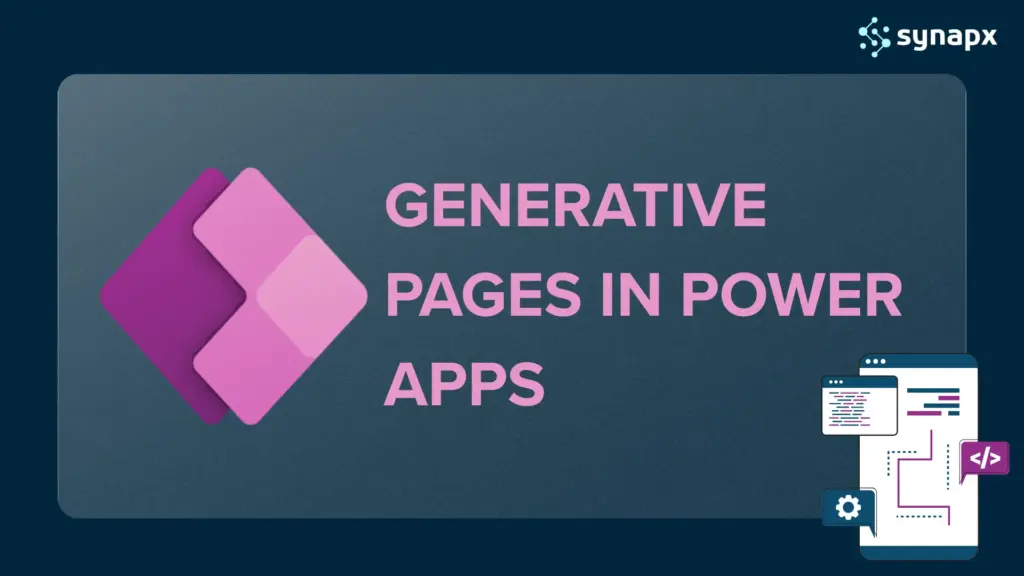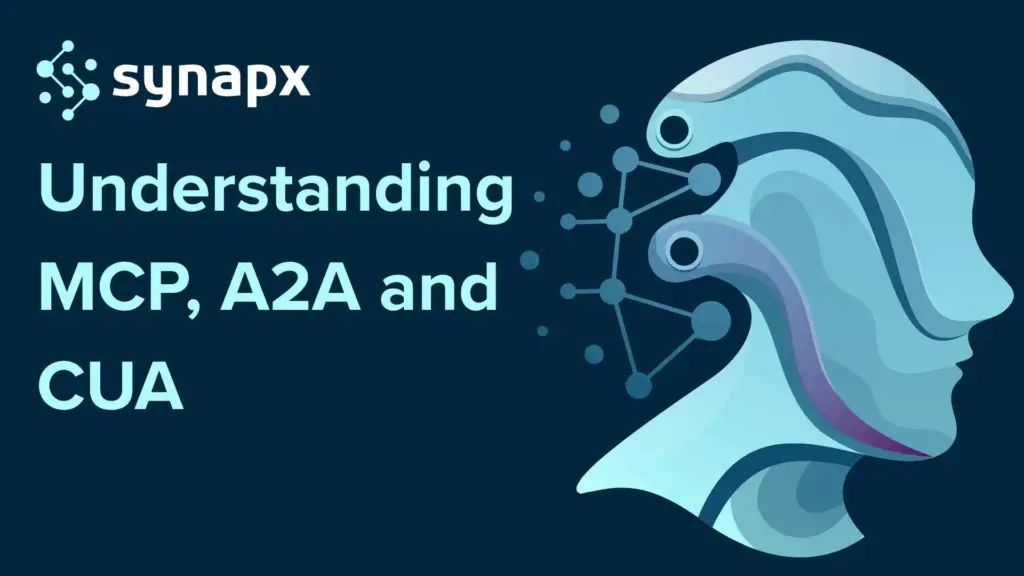Last month, Synapx hosted AI in Action, a dynamic day of discussion, demos, and forward-looking conversations focused on how artificial intelligence is changing the way we work.
The event gathered Microsoft ecosystem experts, industry leaders, and forward-thinking business professionals who all shared one belief: AI isn’t just another tool; it’s becoming a true collaborator.
Across sessions and showcases, attendees explored Microsoft’s newest Copilot advancements, intelligent agents, and multi-agent orchestration, seeing firsthand how these technologies are already transforming productivity, decision-making, and creativity in the workplace.
The atmosphere was electric, but the message was clear: AI is no longer about automation; it’s about augmentation.
Andrew Price, our CEO, opened the event with an overview of the day and a look back at Synapx’s progress since our incorporation in November 2021, highlighting how far we’ve come and what lies ahead.
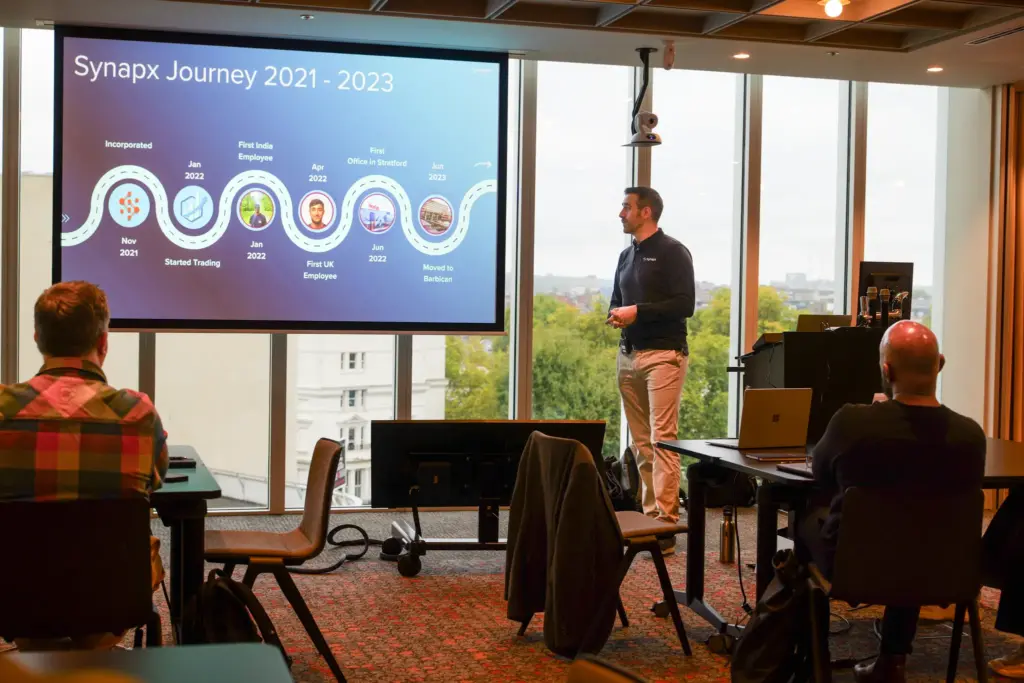
From Wi-Fi Otters to Generative Breakthroughs
Craig Bird from iwantmore.ai had the keynote spot, and his talk stole the show.
He opened with Ethan Mollick’s now-famous “The Recent History of AI in 32 Otters”, a clever timeline that began with a light-hearted prompt, “otter on a plane using Wi-Fi.”
What started as a meme became a benchmark for AI image-generation progress. Craig showed how, between 2021 and 2025, those early blurry blobs of fur evolved into photo-realistic otters and then into fully animated, voice-synced video scenes.
Beyond the laughs, Craig used this example to illustrate a serious point: AI’s creative maturity is accelerating at an astonishing rate. The gap between proprietary and open-weight models is shrinking, and businesses now have access to generative tools that rival enterprise-grade systems.
AI has moved from experimentation to execution, and it’s happening fast.
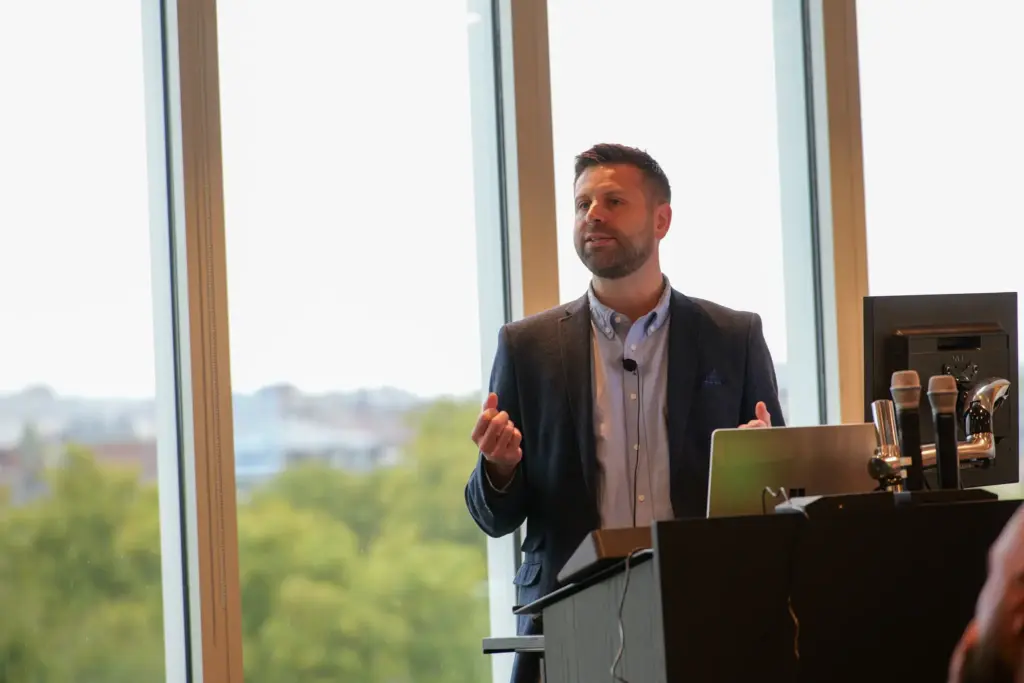
The AI Journey: From Assistant to Autonomous Partner
Craig also unpacked a concept that resonated deeply across the room: the three phases of AI adoption in the workplace. He called it the path toward becoming a Frontier Firm -Microsoft’s term for organisations that combine human creativity and AI collaboration to drive agility and impact.
In Phase 1, AI begins as an assistant, helping with repetitive tasks, drafting content, or summarising data.
In Phase 2, it matures into a digital colleague – an embedded team member that executes specific workflows under human guidance. For example, a marketing agent might help write a go-to-market plan or analyse customer sentiment.
And finally, in Phase 3, AI becomes an autonomous partner. It runs processes end-to-end, while humans set goals, review outcomes, and step in when needed. Think supply chain management, where agents handle logistics and forecasting while humans focus on strategy and relationships.
The key takeaway? AI will not replace people; it will reshape roles and multiply capability.
Inside the AI Ecosystem: From Acronyms to Action
Damien Bird from Microsoft presented a lively session demystifying what many call the “TLA maze” – Microsoft’s three-letter acronyms, such as MCP (Microsoft Copilot Platform), CUA (Copilot User Agent), and A2A (Agent-to-Agent communication).
While they might sound technical, Damien made them accessible, showing how these components work together through an Orchestrator, a core intelligence that coordinates communication between multiple agents and systems.
His takeaway was simple but powerful: Microsoft’s AI ecosystem is evolving from individual tools into a connected web of intelligent agents. Each one collaborates seamlessly with human users and other digital agents, turning isolated workflows into unified, intelligent systems.
He also demonstrated how businesses can create custom Copilot agents designed for their specific needs, tailoring interactions, workflows, and data contexts. This level of personalisation marks a turning point: enterprises are moving from using general-purpose assistants to building domain-specific digital colleagues.

Governance, Fabric, and Low-Code AI in Practice
Governance and accessibility took centre stage next. Narayan Solanki led a thoughtful session on responsible AI governance, emphasising that innovation must always align with transparency, ethics, and accountability.
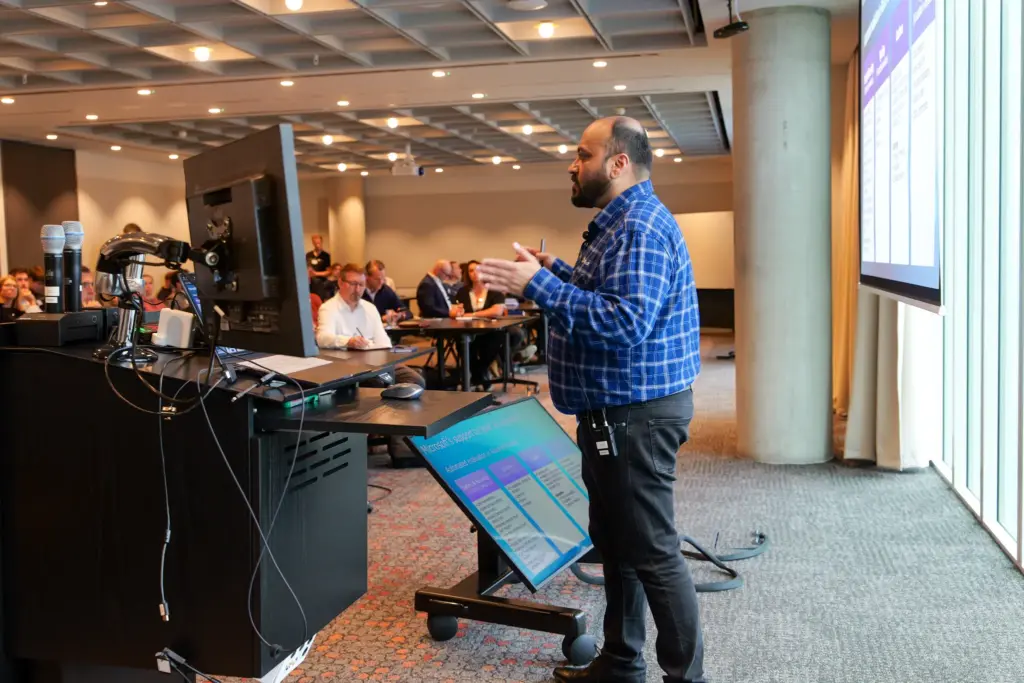
In a world of exponential intelligence, he reminded everyone that governance isn’t a bureaucratic hurdle; it’s the foundation of trust.
Then, Andy Cutler tied everything together by showcasing how Microsoft Fabric unites AI capabilities across the entire data stack – from ingestion to analytics to collaboration, providing the connective tissue that empowers intelligent systems across the enterprise.
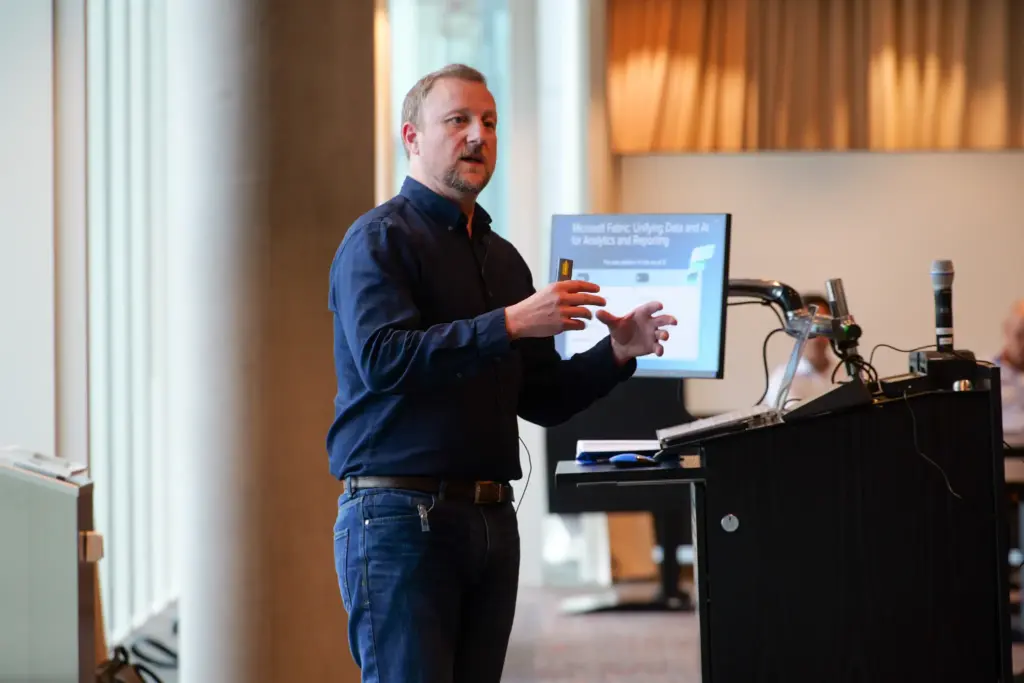
Document Extraction Powered by Low-Code AI
Charlie Phipps-Bennett, Global Director at Apps & Automate, Synapx Director, and 3x Microsoft MVP, showcased how businesses can achieve document extraction with low-code, out-of-the-box AI.
Charlie demonstrated how AI can automatically extract purchase order data, eliminate manual entry, provide audit trails, and deliver real-time reporting, all within the Microsoft ecosystem. He also shared practical prompt-writing tips for better Copilot results: structure instructions carefully, define output formats, and iterate to improve responses.
The session highlighted how combining AI automation and expert insight can transform manual, time-consuming processes into streamlined, intelligent workflows.
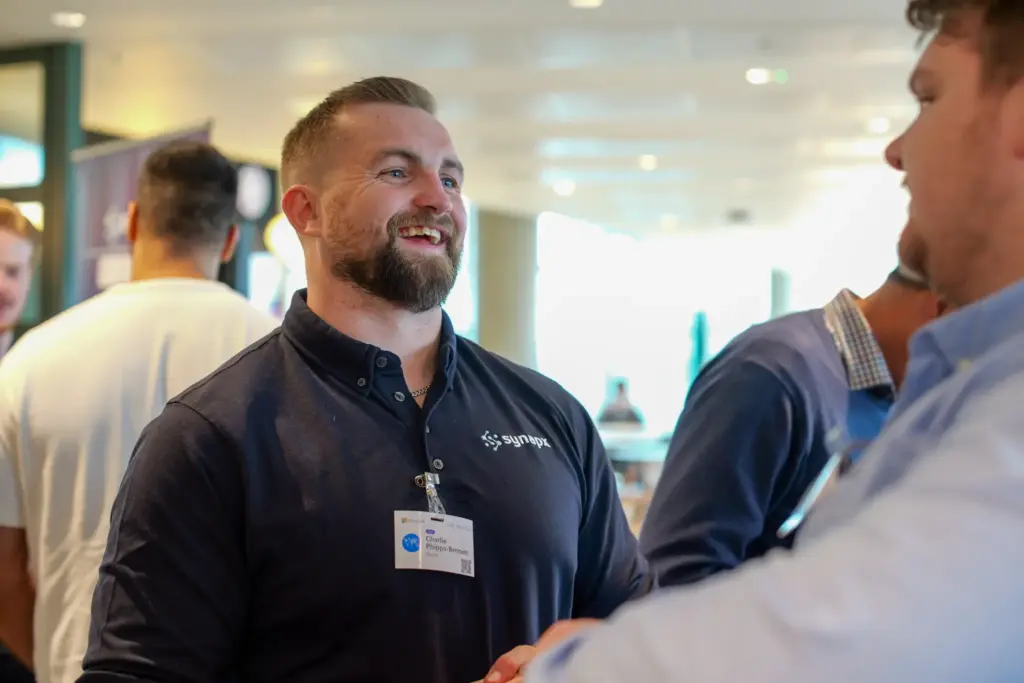
AI Myths vs. Reality
A panel session later in the day tackled one of the most persistent questions in today’s AI conversation: Is AI here to replace us?
The consensus: absolutely not.
AI is not a rival – it’s an amplifier. Organisations that treat AI as a tool for empowerment, not replacement, are already discovering new efficiencies, deeper insights, and more creativity across teams.
As one speaker put it, “The most successful companies won’t be those that use AI, they’ll be the ones that learn how to partner with it.” The event’s discussions made one thing clear: the future of work belongs to teams that embrace human-AI collaboration.

Synapx’s Vision: Building AI-Native Workplaces
As the event ended, Jake from Synapx shared a forward-looking vision for how organisations can evolve into truly AI-native workplaces.
He emphasised that the key to success isn’t in chasing every new tool, but in cultivating a mindset of continuous learning and experimentation.
Synapx envisions a world where human potential and AI capability converge, where automation, agents, and intelligence systems seamlessly collaborate to unlock new levels of creativity, performance, and insight.
As Jake Bowles summed up beautifully: “AI isn’t replacing us – it’s expanding us. The opportunity lies in how we use it to elevate what we can achieve together.”
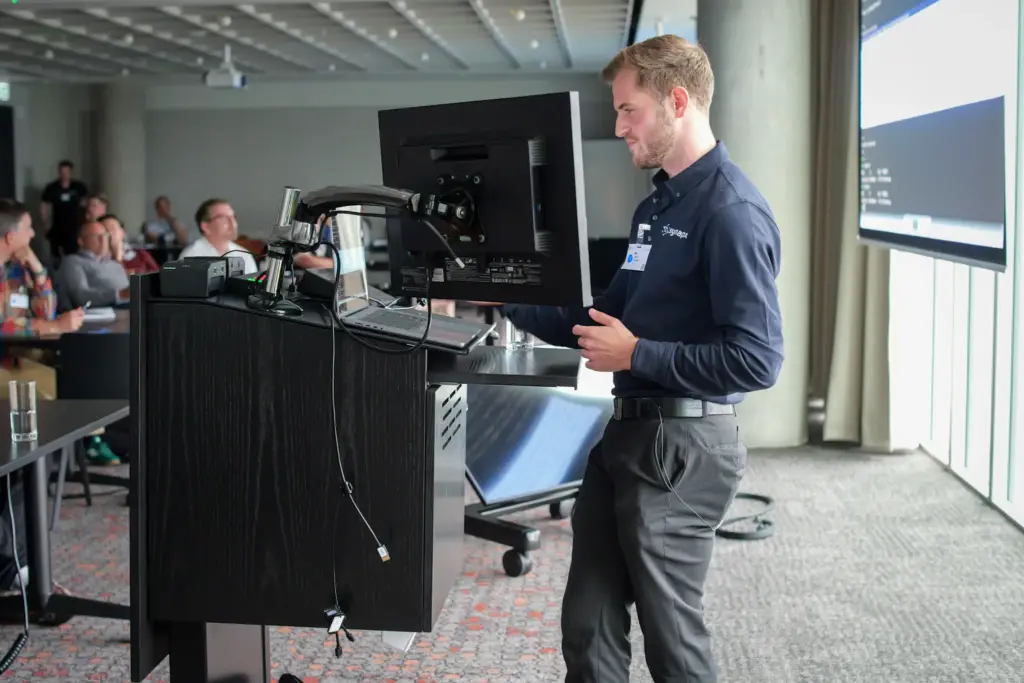
Staying Ahead in the Age of Exponential Intelligence
The overarching message of AI in Action was clear: we’ve entered a new era of exponential intelligence – one where businesses must evolve with AI, not just adopt it.
To stay ahead, organisations need to:
- Build governance frameworks that inspire trust.
- Develop AI literacy across teams.
- Experiment with custom agents and multi-agent collaboration.
- Foster a culture of curiosity and adaptability.
AI isn’t a future consideration anymore; it’s the present reality. And with Synapx’s expertise in guiding organisations through this transformation, businesses can move forward with clarity, confidence, and purpose.

Ready to Shape the Future of Work?
If you’re looking to turn AI from a buzzword into a tangible business advantage, Synapx can help you build an AI strategy tailored to your people, processes, and potential.
Book your AI Roadmap Discovery Session with Synapx today.


